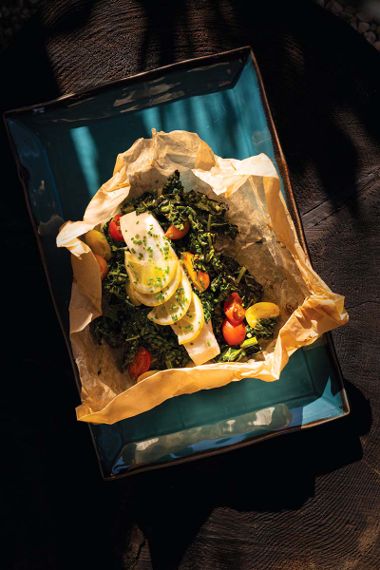Choosing Sustainable Seafood
Are you wondering what it means to buy “sustainable” seafood? The type of seafood, where it’s from, and how it’s caught or harvested all play into what makes seafood sustainable. Simply put, it means that the harvest of a particular seafood is done in a way that allows for continued harvesting into the future.
But it’s not simply a question of controlling overfishing. Impacts on the environment are also key. Wild fish have the reputation of being more sustainable, but that’s only if they’re fished through managed seafood programs and don’t have other impacts such as pollution or depletion of other species.
Seafood from aquaculture can also be sustainable, provided it is done in a way that avoids any detrimental effects to the larger ocean environment or other species.
Stay informed, though, since species considered sustainable one day may be under threat the next. This might mean being willing to try something new or forgoing a favourite for something that is more sustainable. While that may sound like a sacrifice, it’s also an opportunity to discover a new favourite.
If you live in an area where seafood is harvested, making a decision to support local fishers and harvesters may also influence your decision about which sustainable seafood choices to make.
Navigating the specifics can be tricky, but your local fish counter is a great place to start your quest for sustainable fish. Your fishmonger is a valuable source of information about where the product is sourced. You can also look for certifications from organizations such as Ocean Wise and Marine Stewardship Council.
Once you get it home, sustainable seafood’s variety and versatility presents us with an ocean of delicious opportunities in the kitchen. Try these recipes for simple, flavourful, and diverse preparations.

Hokkaido scallops have a meaty texture and sweet flavour that make them particularly suitable for this raw preparation in which the lime juice does the “cooking.” Classic Mexican flavours of red onion, cilantro, and just a dash of heat from serrano pepper make this a fresh and scrumptious way to get a party started.

Steaming fish in parchment-paper packets, also known as cooking en papillote, is a classic technique that allows you to cook all your vegetables and fish at the same time in a quick, easy, and convenient way. Flavours of lemon, garlic, and spicy dried chili make this a simple, yet showstopping meal.

B12-rich mussels are a very good and economical source of protein and iron. Steamed mussels are a classic way to enjoy seafood—and so is this rich, aromatic broth of tomato, fennel, and saffron. Be sure to allow saffron to fully infuse to get the full flavour benefit, and finish off the dish with the fragrant fennel fronds.

These mildly spiced salmon tacos served with sweet and spicy pumpkin seeds will bring a party together. Make a small quantity of salmon go further when you pair it with a fresh red cabbage slaw featuring citrus and cilantro. Drizzled with some bright lime yogurt, the flavours come together perfectly.
Your choices can help
Ocean Wise Seafood is a seafood certification program that helps consumers and businesses choose sustainable seafood options. The program works with scientists to assess the state of aquatic ecosystems and the species they support, making recommendations on sustainable choices. They employ a simple rating of either Ocean Wise Recommended or Not Recommended.
Look for the Ocean Wise symbol when you buy seafood or check out their website (seafood.ocean.org) to search for sustainable seafood options. They have information about various species, where and how they’re fished or harvested, and whether your choice is sustainable. It’s simple, easy, and reassuring.
Face your fish-prep fears
Many of us shy away from cooking seafood because we think we don’t know how, or because we may be worried about spoiling a piece of beautiful fish. Here are some quick tips to relieve your fish-prep fears.
Start with the best
In addition to asking at your fish counter about sustainability, don’t be afraid to ask how the seafood you’re buying has been transported and stored. Frozen fish, which is flash frozen, may be a better choice than a piece of “fresh” fish that has been around for a while.
Store it properly
Shellfish Store shellfish in the fridge, in a shallow pan without water, and cover with a damp kitchen towel.
Frozen fish Remove frozen fish from its packaging, and thaw, loosely covered, in the fridge overnight. Drain any water that collects as it thaws. Cook fresh fish within two days.
Celebrate simplicity
Quality seafood is its own celebration and lends itself to simple preparations: a quick grill, a dash of lemon. Keep it simple and let the flavour of the fish shine through!
Let your fish warm up
It may sound strange, but letting your fish come up to room temperature over about 30 minutes will help you get an even temperature when it’s time to cook.
Explore different cooking methods
Poached, grilled, steamed, baked—seafood does it all. If you always grill fish, explore a gentle poach or raw preparation.
Know your temperature
Use higher heat for grilling, and make sure the pan or grill is hot when the fish hits it. Use low heat and a gentle simmer when poaching.
Skin side down
Cooking fish with the skin on helps keep it together. When grilling, cook the skin side first to protect the fish as it cooks.
Know when it’s done
Fish is done when it flakes easily with a fork and is barely opaque in the centre.
Dive in
Don’t let your fear stop you. Just get started!







